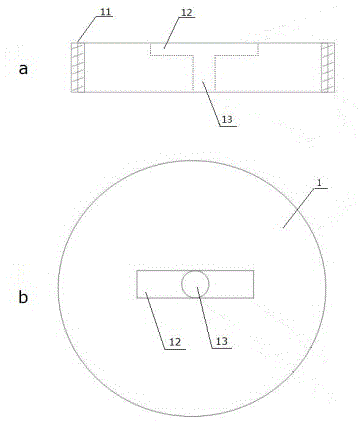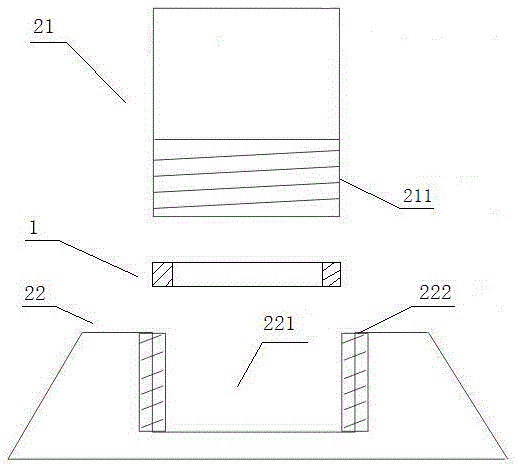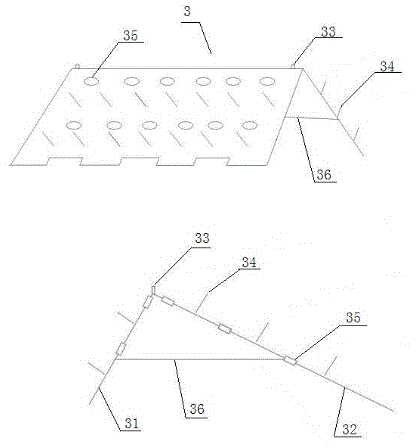Sargassum horneri seaweed bed human-induced restoration device and restoration method thereof
A technology of artificial restoration and copper algae, which is applied in seaweed cultivation, botany equipment and methods, climate change adaptation, etc., can solve the problems of low seabed survival rate of seedlings, weak seedling vitality, and consumption of hydropower and manpower, etc., so as to facilitate tracking Observe, improve resilience, and improve the effect of robustness
- Summary
- Abstract
- Description
- Claims
- Application Information
AI Technical Summary
Problems solved by technology
Method used
Image
Examples
Embodiment 1
[0040] The height of the sub-reef adopted in the present embodiment is 4cm, and the diameter of the sub-reef is 18cm; the groove depth of the base is 8cm, the height of the upper section of the protection body is 8cm, and the height of the lower section of the protection body is 7cm.
[0041] Sub-reefs, bases and mother reefs of the present invention must be soaked in fresh water for one week before use, and then soaked in seawater for one week. During each soaking period, the water needs to be changed 2-3 times to ensure the leaching of alkaline substances. Then, during the dry season, use quick-drying cement to fix the foundation horizontally in the low tide area of the intertidal zone.
[0042] When picking seedlings, spread the sub-reef on the bottom of the seedling pool, the seawater depth in the seedling pool should not be less than 40cm, put the mature copper algae in the seedling pool, and carry out static water seedling picking. During the seedling picking process, l...
PUM
| Property | Measurement | Unit |
|---|---|---|
| Diameter | aaaaa | aaaaa |
| Height | aaaaa | aaaaa |
| Diameter | aaaaa | aaaaa |
Abstract
Description
Claims
Application Information
 Login to View More
Login to View More - R&D
- Intellectual Property
- Life Sciences
- Materials
- Tech Scout
- Unparalleled Data Quality
- Higher Quality Content
- 60% Fewer Hallucinations
Browse by: Latest US Patents, China's latest patents, Technical Efficacy Thesaurus, Application Domain, Technology Topic, Popular Technical Reports.
© 2025 PatSnap. All rights reserved.Legal|Privacy policy|Modern Slavery Act Transparency Statement|Sitemap|About US| Contact US: help@patsnap.com



